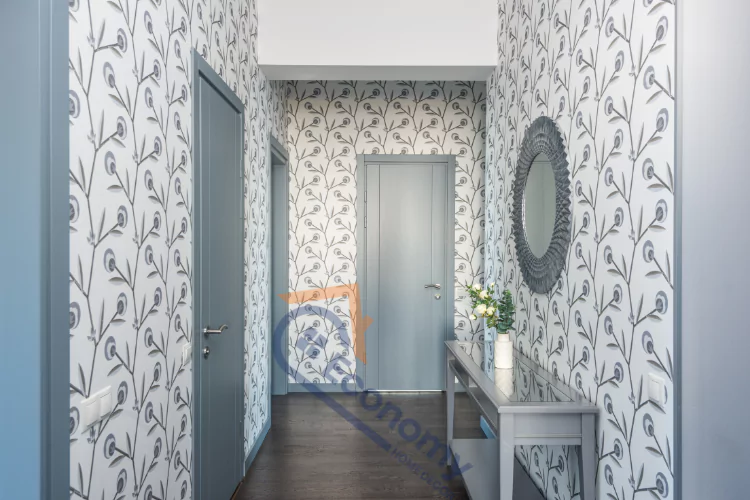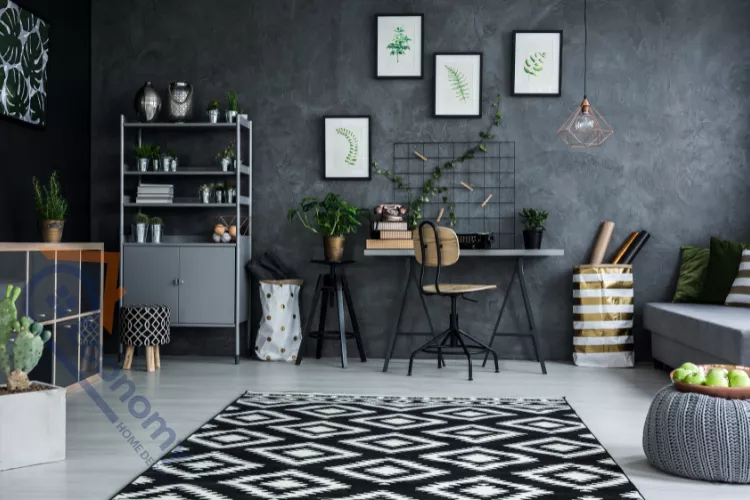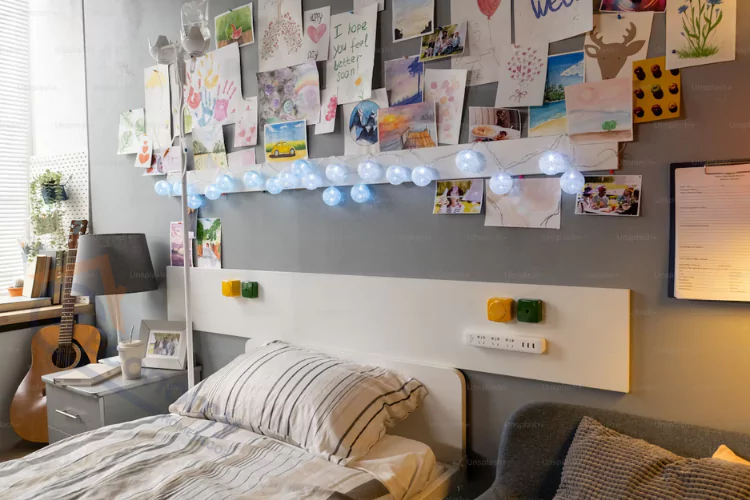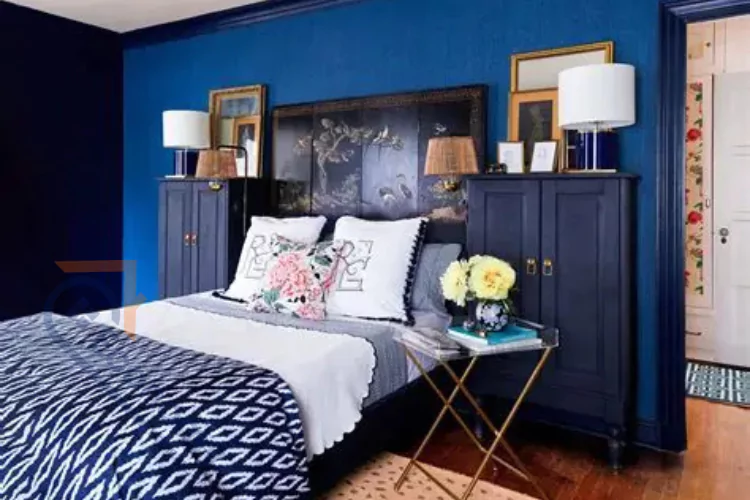Your entryway hallway is the very first space guests encounter when they step into your home, making it one of the most important areas to design thoughtfully. This transitional space sets the tone for your entire home and creates lasting first impressions. Whether you’re working with a grand foyer or a narrow corridor, implementing creative entryway hallway decorating ideas can transform this often-overlooked space into a welcoming and functional area that reflects your personal style.
The art of creating an inviting entryway goes beyond simply placing a coat rack by the door. It involves careful consideration of lighting, storage solutions, color schemes, and decorative elements that work together harmoniously. From small apartment entryways to spacious hallways in larger homes, every space presents unique opportunities and challenges that can be addressed with the right design approach.
Understanding Your Entryway Hallway Space
Before diving into specific entryway hallway decor ideas, it’s essential to assess your space thoroughly. Every entryway hallway is unique, with different dimensions, lighting conditions, and architectural features that influence design decisions. Start by measuring your space and noting any existing elements like windows, built-in storage, or architectural details that you’ll need to work around.
Consider the traffic flow through your entryway hallway and identify the primary functions it needs to serve. Most entryways need to accommodate shoe storage, coat hanging, key organization, and mail collection. Some may also serve as display areas for artwork or family photos. Understanding these functional requirements will help you prioritize your decorating efforts and ensure that beauty doesn’t compromise practicality.
The natural and artificial lighting in your entryway hallway significantly impacts how colors and textures appear throughout the day. Observe how light changes in your space from morning to evening, and consider how this affects your entryway hallway wall decor choices. Spaces with limited natural light may benefit from lighter color palettes and strategic mirror placement to maximize brightness.
Assessing Your Space’s Unique Features
Every entryway hallway has distinctive architectural elements that can either be highlighted or downplayed through thoughtful design. High ceilings offer opportunities for dramatic lighting fixtures or tall artwork, while lower ceilings might benefit from horizontal design elements that create the illusion of width. Narrow hallways can feel more spacious with the right color choices and mirror placement.
Essential Elements of Welcoming Entryway Design
Creating an inviting entryway hallway requires balancing several key elements that work together to create a cohesive and functional space. The most successful hallway entryway decor combines practical storage solutions with aesthetic appeal, ensuring that your space is both beautiful and useful for daily life.
Lighting serves as the foundation of any well-designed entryway hallway. A combination of ambient, task, and accent lighting creates depth and visual interest while ensuring the space is safely navigable. Consider installing a statement chandelier or pendant light as a focal point, supplemented by wall sconces or table lamps for layered illumination.
Storage solutions should be both functional and stylish, seamlessly integrating into your overall design scheme. Built-in cubbies, elegant coat hooks, and decorative baskets can keep clutter at bay while contributing to the space’s aesthetic appeal. The key is selecting storage pieces that complement your chosen style rather than appearing as afterthoughts.
Color plays a crucial role in setting the mood and perceived size of your entryway hallway. Light, neutral colors can make small spaces feel larger and brighter, while bold colors can create drama and personality in larger areas. The decorator neutral color entryway hallway approach remains popular because it provides a versatile backdrop for seasonal decorating changes.
Creating Functional Beauty
The most successful entryway hallway designs seamlessly blend form and function. Every decorative element should serve a purpose, whether it’s providing storage, reflecting light, or simply bringing joy to those who pass through the space daily.
Color Schemes That Make a Statement
Selecting the right color palette for your entryway hallway sets the tone for your entire home and significantly impacts how the space feels to both residents and guests. Decorator neutral colors entryway hallway designs have gained popularity because they create a sophisticated backdrop that works well with changing seasonal decorations and various furniture styles.
Neutral color schemes don’t have to be boring. Consider layering different shades of the same color family to create depth and visual interest. Warm whites, soft grays, and muted beiges can be enhanced with subtle accent colors through artwork, textiles, and accessories. These palettes also photograph beautifully and tend to have timeless appeal that won’t look dated in a few years.
For those who prefer more dramatic entryway hallway decor, consider using bold colors strategically. A single accent wall in a rich navy, deep emerald, or warm terracotta can create a stunning focal point without overwhelming the space. Dark colors can actually make a hallway feel more intimate and cozy when balanced with adequate lighting and lighter accents.
The psychology of color plays an important role in entryway design. Blues and greens tend to have calming effects, while warmer colors like yellows and oranges can feel more energizing and welcoming. Consider how you want guests to feel when they enter your home, and choose colors that support that emotional response.
Seasonal Color Adaptations
One advantage of starting with a neutral base is the flexibility it provides for seasonal decorating. You can easily change accent pieces, throw pillows, and artwork to reflect different seasons without needing to repaint or make major changes to your foundational design elements.
Lighting Solutions for Every Entryway
Proper lighting is crucial for creating a welcoming entryway hallway that functions well throughout the day and evening hours. The best entryway hallway decorating ideas incorporate multiple light sources at different heights to create a warm, inviting atmosphere while ensuring adequate illumination for practical activities like finding keys or checking mail.
Overhead lighting provides general illumination and should be the starting point for any entryway lighting design. Chandeliers, pendant lights, or flush-mount fixtures can serve as both functional and decorative elements. When selecting overhead lighting, consider the height of your ceiling and the overall scale of your space to ensure proportional balance.
Wall sconces add another layer of lighting while freeing up floor and table space for other decorative elements. They’re particularly effective in narrow hallways where floor lamps might create obstacles. Position sconces at eye level or slightly higher to avoid casting unflattering shadows on faces while providing adequate illumination for entryway hallway wall decor.
Table lamps and floor lamps can add warmth and personality to larger entryway spaces. These fixtures allow you to create cozy pools of light that make the space feel more intimate and homey. Choose lamps with interesting bases or unique shades that complement your overall design scheme while providing practical task lighting.
Natural Light Maximization
If your entryway hallway has windows, make the most of this natural light by keeping window treatments minimal and using mirrors strategically to reflect light deeper into the space.
| Lighting Type | Best For | Placement Tips | Style Considerations |
|---|---|---|---|
| Chandeliers | High ceilings, formal entries | Center of space, 7+ feet from floor | Match architectural style |
| Pendant Lights | Medium ceilings, modern looks | Over console tables, centered | Consider adjustable heights |
| Wall Sconces | Narrow hallways, accent lighting | 60-66 inches from floor | Pair for balanced illumination |
| Table Lamps | Console tables, warm ambiance | On sturdy surfaces only | Coordinate with decor style |
| Floor Lamps | Larger spaces, reading areas | Corners, beside seating | Ensure stable base |
Storage Solutions That Don’t Compromise Style
Effective storage is essential for maintaining an organized and welcoming entryway hallway, but it doesn’t have to come at the expense of style. The most successful hallway entryway decor ideas incorporate storage solutions that enhance rather than detract from the overall aesthetic appeal of the space.
Built-in storage offers the most seamless integration with your entryway’s architecture. Custom cubbies, coat closets, and shoe storage can be designed to match your home’s existing trim and architectural details. While this option requires more upfront investment, it provides maximum storage capacity while maintaining clean, uncluttered lines.
Freestanding furniture pieces offer flexibility and can be changed or updated more easily than built-ins. Console tables with drawers provide surface space for decorative items while hiding everyday clutter. Storage benches serve dual purposes by offering seating while concealing shoes, gloves, or seasonal items.
Hooks and hanging systems keep frequently used items easily accessible while maintaining organization. Decorative hooks can serve as artistic elements in their own right, while coat trees or standing racks can be moved as needed. Consider the weight capacity and installation requirements when selecting hanging storage solutions.
Baskets and bins provide attractive solutions for corralling smaller items that tend to create clutter. Choose materials and colors that complement your overall design scheme, and consider labeling systems for family organization. Woven baskets add textural interest while plastic bins might be more practical for wet or muddy items.
Hidden Storage Opportunities
Look for creative ways to incorporate storage into unexpected places, such as hollow ottomans, storage benches, or decorative boxes that can hold keys, sunglasses, and other small items.
Wall Decor and Artwork Placement
Entryway hallway wall decor provides an excellent opportunity to showcase your personality and set the tone for your home’s overall aesthetic. The key to successful wall decoration is balancing visual impact with the space’s proportions and ensuring that artwork enhances rather than overwhelms the area.
Gallery walls have become increasingly popular for entryway hallways because they allow homeowners to display multiple pieces while creating visual interest. When planning a gallery wall, start by laying out your arrangement on the floor before hanging anything. Mix different sizes, shapes, and types of artwork for the most dynamic effect, but maintain some unifying elements like frame colors or matting styles.
Large-scale artwork can make a dramatic statement in entryway hallways with sufficient wall space. A single oversized piece can serve as a focal point and eliminate the need for multiple smaller decorations. Consider the viewing distance when selecting large pieces – artwork that will be viewed primarily while walking should have bolder, simpler compositions than pieces meant for close examination.
Mirrors serve both functional and decorative purposes in entryway hallways. They provide last-minute appearance checks while also reflecting light and creating the illusion of more space. Consider the size and placement carefully – mirrors should be hung at appropriate heights for the primary users and positioned to reflect attractive views rather than clutter or blank walls.
Three-dimensional wall elements like shelving, shadow boxes, or sculptural pieces add depth and textural interest to entryway walls. These elements work particularly well in modern or contemporary design schemes where clean lines and geometric shapes complement the overall aesthetic.
Creating Visual Flow
Consider how your wall decor choices connect with adjacent spaces and contribute to the overall flow of your home’s design narrative.
Furniture Selection for Entryway Hallways
Choosing the right furniture for your entryway hallway requires balancing functionality, scale, and style considerations. The best decorating entryway hallway approaches incorporate furniture pieces that serve multiple purposes while contributing to the space’s overall aesthetic appeal.
Console tables are perhaps the most versatile furniture pieces for entryway hallways. They provide surface space for decorative items, mail sorting, and key storage while often including drawers or shelves for additional organization. When selecting a console table, consider the proportions carefully – the piece should be substantial enough to make a visual impact without overwhelming the space.
Seating options in entryway hallways serve both practical and social functions. A bench or chair provides a convenient spot for putting on shoes or setting down packages, while also suggesting to guests that they’re welcome to sit and stay awhile. Storage benches offer the additional benefit of hiding seasonal items or shoes.
Accent chairs can add personality and comfort to larger entryway spaces while providing flexible seating options. Choose chairs with interesting shapes, textures, or colors that complement your overall design scheme. Consider how the chair’s scale relates to other elements in the space and ensure it doesn’t impede traffic flow.
Storage furniture like cabinets, armoires, or credenzas can provide significant organizational benefits in entryway hallways while serving as substantial decorative elements. These pieces work particularly well in larger spaces where their size won’t overwhelm the area’s proportions.
Multi-Functional Furniture Benefits
Look for furniture pieces that serve multiple purposes to maximize both functionality and space efficiency in your entryway hallway design.
Creating Focal Points and Visual Interest
Successful entryway hallway corner decor and overall design relies on creating compelling focal points that draw the eye and establish visual hierarchy within the space. A well-designed focal point serves as an anchor for the entire room’s design while providing a memorable element that guests will associate with your home.
Architectural features like arched doorways, exposed beams, or built-in niches can serve as natural focal points that simply need enhancement rather than creation. Highlighting these existing features with strategic lighting, paint colors, or decorative elements can create stunning visual impact without requiring major renovations.
Statement lighting fixtures often serve as excellent focal points in entryway hallways. A dramatic chandelier, unique pendant light, or artistic sconce can immediately capture attention while providing necessary illumination. When selecting statement lighting, consider how it relates to the space’s scale and overall design aesthetic.
Large-scale artwork or photography can create compelling focal points on blank walls. Consider commissioning a custom piece or selecting artwork that reflects your family’s interests or travels. The key is choosing something that will remain meaningful and appealing over time rather than following temporary trends.
Sculptural elements like large vases, architectural fragments, or contemporary art pieces can add three-dimensional interest to entryway hallways. These elements work particularly well on console tables or built-in shelving where they can be appreciated from multiple angles.
Balancing Drama and Function
While focal points should create visual impact, they shouldn’t interfere with the practical functions of your entryway hallway or overwhelm the space’s other design elements.
Small Space Solutions and Tricks
How to decorate entryway hallway spaces that are particularly small or narrow requires creative approaches that maximize both visual appeal and functionality without creating a cramped or cluttered feeling. Small entryways can be just as welcoming and stylish as larger spaces when designed thoughtfully.
Vertical design elements can make small entryway hallways feel taller and more spacious. Consider using tall, narrow furniture pieces, vertical artwork arrangements, or floor-to-ceiling storage solutions that draw the eye upward. Vertical stripes in wallpaper or paint can also create the illusion of height.
Light colors and strategic mirror placement can significantly impact how spacious a small entryway hallway feels. Light, neutral colors reflect more light and create an airy feeling, while mirrors can double the visual space and reflect natural light deeper into the area. Position mirrors to reflect attractive views or light sources rather than clutter.
Multi-functional furniture becomes even more important in small spaces where every piece must earn its place. Look for console tables with storage, benches that open for shoe storage, or wall-mounted pieces that don’t take up floor space. Every item should serve at least two purposes to maximize efficiency.
Minimalist approaches work particularly well in small entryway hallways where too many decorative elements can quickly become overwhelming. Focus on a few high-quality, impactful pieces rather than numerous smaller items. This creates a more sophisticated and spacious feeling.
Optical Illusion Techniques
Use design tricks like diagonal tile patterns, strategic lighting placement, and carefully chosen artwork to make small spaces appear larger and more inviting.
Large Entryway Design Strategies
Huge entryway hallway decor presents different challenges and opportunities compared to smaller spaces. Large entryways can accommodate more substantial furniture pieces and dramatic design elements, but they also require careful planning to avoid feeling empty or unwelcoming.
Creating zones within large entryway hallways can make the space feel more intimate and functional. Consider designating areas for different activities like a seating area with chairs and a side table, a storage zone with coat hooks and shoe storage, and a display area for artwork or decorative objects.
Scale becomes critically important in large entryway spaces. Furniture pieces that would overwhelm a small space might look lost in a grand foyer. Don’t be afraid to choose substantial pieces like large console tables, oversized artwork, or dramatic lighting fixtures that can hold their own in the space.
Layered lighting approaches work particularly well in large entryway hallways where a single light source might create unwanted shadows or harsh contrasts. Combine overhead lighting with table lamps, floor lamps, and accent lighting to create a warm, welcoming atmosphere throughout the space.
Color strategies for large entryways can be bolder than those used in smaller spaces. Consider using rich, saturated colors on accent walls or incorporating larger patterns in wallpaper or rugs. The additional space can handle more visual weight without feeling overwhelming.
Avoiding the Empty Echo Effect
Large spaces can feel cold and unwelcoming if not properly furnished and decorated. Use area rugs, soft furnishings, and warm lighting to create a more intimate, comfortable atmosphere.
Seasonal Decorating and Maintenance
One of the most enjoyable aspects of decorating entryways hallways is the opportunity to change decorative elements seasonally, keeping your space fresh and reflecting the changing year. Seasonal decorating also allows you to experiment with different colors, textures, and themes without making permanent changes to your foundational design.
Spring decorating might focus on fresh, light colors and natural elements like flowers, branches, or botanical prints. This is an excellent time to deep clean your entryway and refresh any elements that have become worn or dated during the winter months. Consider swapping heavy winter accessories for lighter, brighter alternatives.
Summer decorating can embrace bolder colors and more casual textures. Beach-inspired elements, tropical plants, or nautical themes work well during warmer months. This is also a good time to ensure adequate ventilation and cooling in your entryway hallway, as it’s often the first space guests encounter when coming in from hot weather.
Fall decorating offers rich color palettes and cozy textures that create warmth and comfort as temperatures cool. Pumpkins, autumn leaves, warm-toned artwork, and heavier fabrics can transform your entryway into a welcoming retreat from crisp outdoor air.
Winter decorating might focus on creating a warm, inviting atmosphere that provides comfort during cold months. Consider adding soft textures like throw pillows or blankets, warm lighting, and elements that reflect the season’s beauty like evergreen branches or winter-themed artwork.
Maintenance and Longevity
Regular maintenance keeps your entryway hallway looking its best year-round. This includes cleaning light fixtures, dusting artwork, and refreshing any elements that show wear from daily use.
Budget-Friendly Decorating Tips
Creating beautiful ideas for decorating hallways and entryways doesn’t require a substantial budget when you approach the project strategically and focus on high-impact, low-cost improvements. Many effective decorating solutions can be accomplished with creativity and effort rather than expensive purchases.
DIY projects can significantly reduce decorating costs while allowing you to create custom pieces that perfectly fit your space and style preferences. Consider painting furniture pieces you already own, creating your own artwork, or repurposing items from other areas of your home for entryway use.
Shopping secondhand stores, consignment shops, and online marketplaces can yield unique pieces at fraction of retail costs. Look for solid wood furniture that can be refinished, interesting artwork that might just need new frames, or decorative objects that complement your chosen color scheme.
Paint is one of the most cost-effective ways to dramatically transform an entryway hallway. Whether you’re changing wall colors, painting furniture, or creating accent walls, paint can completely alter the feeling of a space for relatively little money. Consider techniques like color blocking or simple stenciling for added visual interest.
Rearranging and repurposing items you already own can refresh your entryway without spending any money. Sometimes a mirror from another room, a side table from your living room, or artwork from a bedroom can find new life in your entryway hallway.
Investment vs. Savings Balance
While budget-friendly approaches are valuable, consider investing in a few key pieces like good lighting or a quality mirror that will have lasting impact and durability.
Key Takeaways
Creating a welcoming entryway hallway involves balancing functional requirements with aesthetic appeal while working within your space’s unique constraints and opportunities. The most successful designs incorporate thoughtful lighting, appropriate storage solutions, and decorative elements that reflect your personal style while serving the practical needs of daily life.
Entryway hallway decorating ideas should always begin with a thorough assessment of your space’s dimensions, lighting conditions, and functional requirements. Understanding these fundamentals allows you to make informed decisions about color schemes, furniture selection, and decorative elements that will work harmoniously together.
Remember that your entryway hallway sets the tone for your entire home and creates first impressions for guests. Investing time and thought into this space’s design pays dividends in both daily functionality and overall home enjoyment. Whether you’re working with a small apartment entryway or a grand foyer, the principles of good design remain consistent: create balance, serve function, and reflect your personality.
Frequently Asked Questions
The most crucial elements include adequate lighting for safety and ambiance, functional storage solutions for everyday items, appropriate color schemes that complement your home’s overall design, and decorative elements that create visual interest while maintaining clear traffic flow.
Use light colors on walls and ceilings, incorporate mirrors to reflect light and create visual depth, choose vertical design elements that draw the eye upward, minimize clutter with smart storage solutions, and ensure adequate lighting to eliminate dark corners.
Start with a neutral foundation that works year-round, then add seasonal elements through easily changeable accessories like throw pillows, artwork, plants, or decorative objects. Focus on one or two seasonal touches rather than completely transforming the space.
Measure your space carefully and ensure at least 36 inches of walking space remains after furniture placement. Furniture should be proportional to the room size – substantial pieces work better in larger spaces, while smaller, multi-functional pieces suit compact areas.
Layer different types of lighting including overhead ambient lighting for general illumination, task lighting for practical activities, and accent lighting for visual interest. Consider the space’s natural light and how lighting needs change throughout the day.
Choose storage solutions that serve dual purposes, such as benches with hidden compartments or console tables with drawers. Use baskets or bins in coordinating colors to contain smaller items, and consider built-in solutions for a seamless look.







